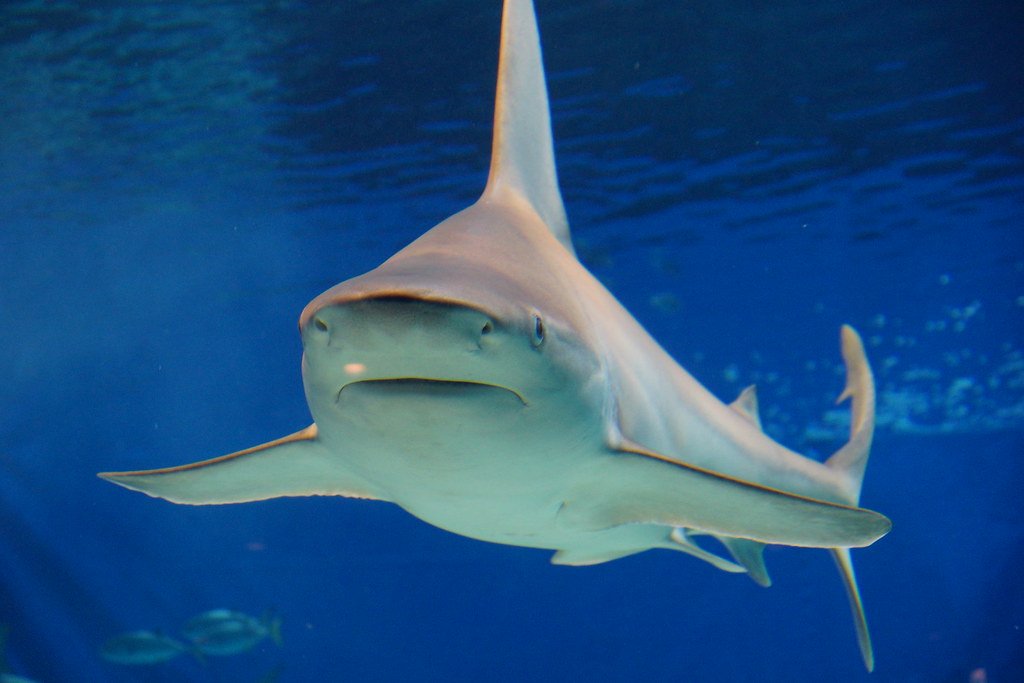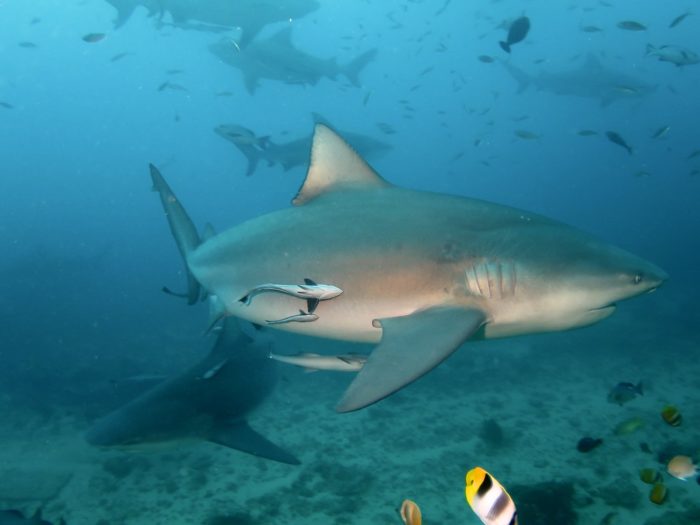
Sea Wonder: Bull Shark

Photo credit: ume-y
DESCRIPTION
The bull shark is one of the largest requiem sharks, and gets its name from its stocky appearance and reputation for aggressive behavior. Bull sharks have a rounded snout and a stout body. Adult bull sharks usually weigh between two hundred to five hundred pounds and measure about seven to twelve feet long. Like many of its relatives, it is plain grey on top with a pale white belly. This color pattern is known as countershading, which helps them match their environment. When looking up through the water column, they blend in with the light from above, and when viewed from above, they are hard to distinguish from the darker depths below.
DIET & HABITAT
Bull sharks have been found in tropical and temperate waters along the Atlantic and Pacific coasts. They have been spotted in both Florida Keys National Marine Sanctuary and Gray’s Reef National Marine Sanctuary. Bull sharks prefer shallow, coastal waters, but have also been found up freshwater rivers and in lakes. Unlike most other sharks, they have specialized glands and kidneys which enable them to swim in salt or freshwater. This adaptation makes them more likely to encounter humans in coastal areas.
Bull sharks are solitary hunters which eat a wide range of species- including fish, rays, birds, marine mammals, and even other sharks. They normally cruise slowly along the seafloor, but will use quick bursts of speed to capture prey. Large adult sharks do not have any natural predators.
LIFE HISTORY
Bull sharks mate via internal fertilization, and the growing embryos develop inside the mother. Pregnant females will migrate to estuarine areas to give birth in late spring and summer. Bull sharks give birth to live young, with average litters of eight to ten. When the young sharks are born, they are entirely independent and free-swimming. Juveniles will stay in these nursery areas, and they return to water waters offshore when the temperatures drop. Bull sharks usually live for approximately twelve to sixteen years.
THREATS & CONSERVATION
The bull shark is listed as “near threatened” on the IUCN Red List. Since bull sharks tend to live near coastlines, they are vulnerable to human impacts including pollution and habitat degradation. Bull sharks are not usually a target species for fisheries, however they may be caught as bycatch. Bull sharks have been exploited for their skin, liver, oil, and meat, as well as their fins. Bull sharks are not currently legally protected.

Photo credit: Daniel Kwok
